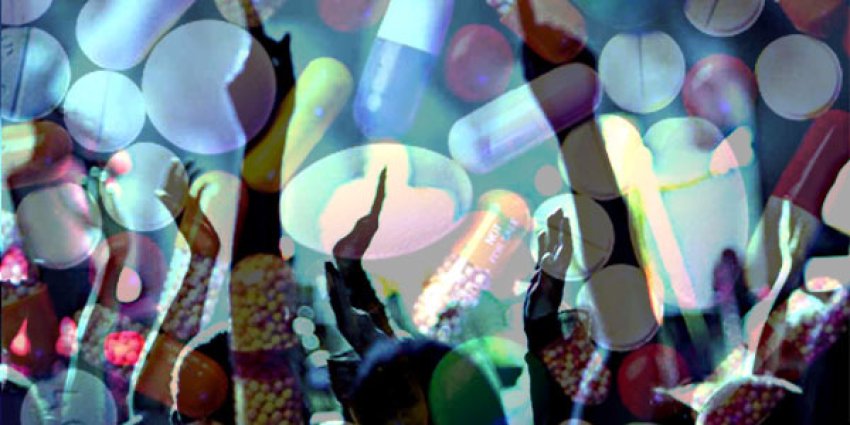
It seems the whole country is discussing pill testing. A simple harm reduction measure, pill testing enables someone to learn what is in drugs they intend to take, which may have been contaminated with potentially deadly substances, and gives them an opportunity to learn how to reduce the chance of any adverse effects of drug use.
Polls show a large majority across the political spectrum support it.
However, various Australian governments have taken a conservative approach to harm reduction measures, tolerating thousands of deaths to overdoses and other causes with the rationale that measures such as pill testing and safe injecting rooms “send the signal” that it is OK to use drugs or that drugs are safe.
The lack of comprehensive harm reduction and the steadfast refusal to allow pill testing can be traced back to the prohibition of drugs.
Prohibition is enforced worldwide by the United Nations conventions on narcotic drugs (1961) and psychotropic substances (1971), which equate drug use with “lowered moral standards” and “evil”.
Legal sanctions, and the widespread view of people who use drugs as weak, immoral, depraved, and/or dissolute, permits this lack of response to the loss of lives from overdoses.
On top of the handful of festival deaths each year in Australia, about four people die every day from an opioid overdose and the rate is rising — a statistic that has prompted a yawning lack of response from politicians.
This is not to mention other forms of drug-related harm, including lack of resources for treatment, lack of treatment options, arrest for personal drug use, increased exposure to domestic and other violence, family separation … the list goes on.
It is extremely difficult to quantify and compare the level of harm of legal versus illegal substances. A properly regulated supply of MDMA and other psychotropic substances would alleviate the need for pill testing.
But again, we face the same outcry — such a move would “encourage” people to take drugs as though that is a bad thing in and of itself.
Is it? We don’t really know.
It’s impossible to untangle the harms of prohibition from the harms of the substances themselves.
We know that the harms from alcohol consumption — the cost to the health and criminal justice systems, treatment demands and personal distress — far outstrip any other substance. But of course, many more people use alcohol than any other substance.
Professor David Nutt, a former chief drug advisor to the British government, has published a number of studies ranking drug-related harm.
In a 2010 study asking experts to rank harm to users and general society, alcohol won hands down. An earlier 2007 study ranked heroin top, alcohol at number five and most “party” drugs — ketamine, cannabis, LSD, GHB — as less harmful.
The line between legal and illegal is arbitrary and the available evidence suggests that the reason that “no illicit drug is safe”, as New South Wales Premier Gladys Berejiklian tells us, is not because they are not safe but because they are illicit.
The impact of prohibition extends beyond the lack of a safe supply of party drugs.
The choices of substitution treatment available for opioid dependence are limited and many people experience a great deal of harm from having to inject substances such as methadone, which is specifically designed to be hard to inject. Other opioids such as oxycodone have been designed to not be injectable, greatly increasing the risks.
Equipment that would make it safer, such as large bore injecting equipment and butterflies, have been banned for distribution at needle and syringe programs since the late 1990s in NSW (they are legal in other states).
Pipes to smoke methamphetamine have been banned and are difficult to obtain in parts of NSW, meaning that more people inject than might otherwise do so.
These harms are well understood, but policy does not change because the voices of people who use drugs are criminalised and marginalised.
Prohibition hits people at the margins the hardest. Anyone who is already marginalised is far more likely to experience the worst consequences of drug use.
The “War on Drugs” has been directly targeted at the working class, particularly Black Americans. The situation is no different here in Australia.
This is why pill testing as a harm reduction measure is important.
Harm reduction has largely been confined to injecting drug use with the aim of preventing the generalised spread of blood-borne viral illnesses such as HIV and hepatitis C.
Pill testing is a harm reduction intervention aimed at preventing harm to the drug user themselves. It is an acknowledgement that drugs exist, people use them and that they are entitled to live in a world where it is not a given that they deserve to die for this.
Pill testing is a substitute measure for a regulated supply of these substances. Regulation would ensure a safe supply as many of the more dangerous substances invented or distributed specifically to avoid detection — fentanyl, PMA, synthetic cannabis — are all less safe versions of the substances they mimic.
So, by all means, let’s implement pill testing, but only as a first step in creating a safer and saner world by regulating supply.
[Mary Ellen Harrod is the CEO of the NSW Users and Aids Association.]